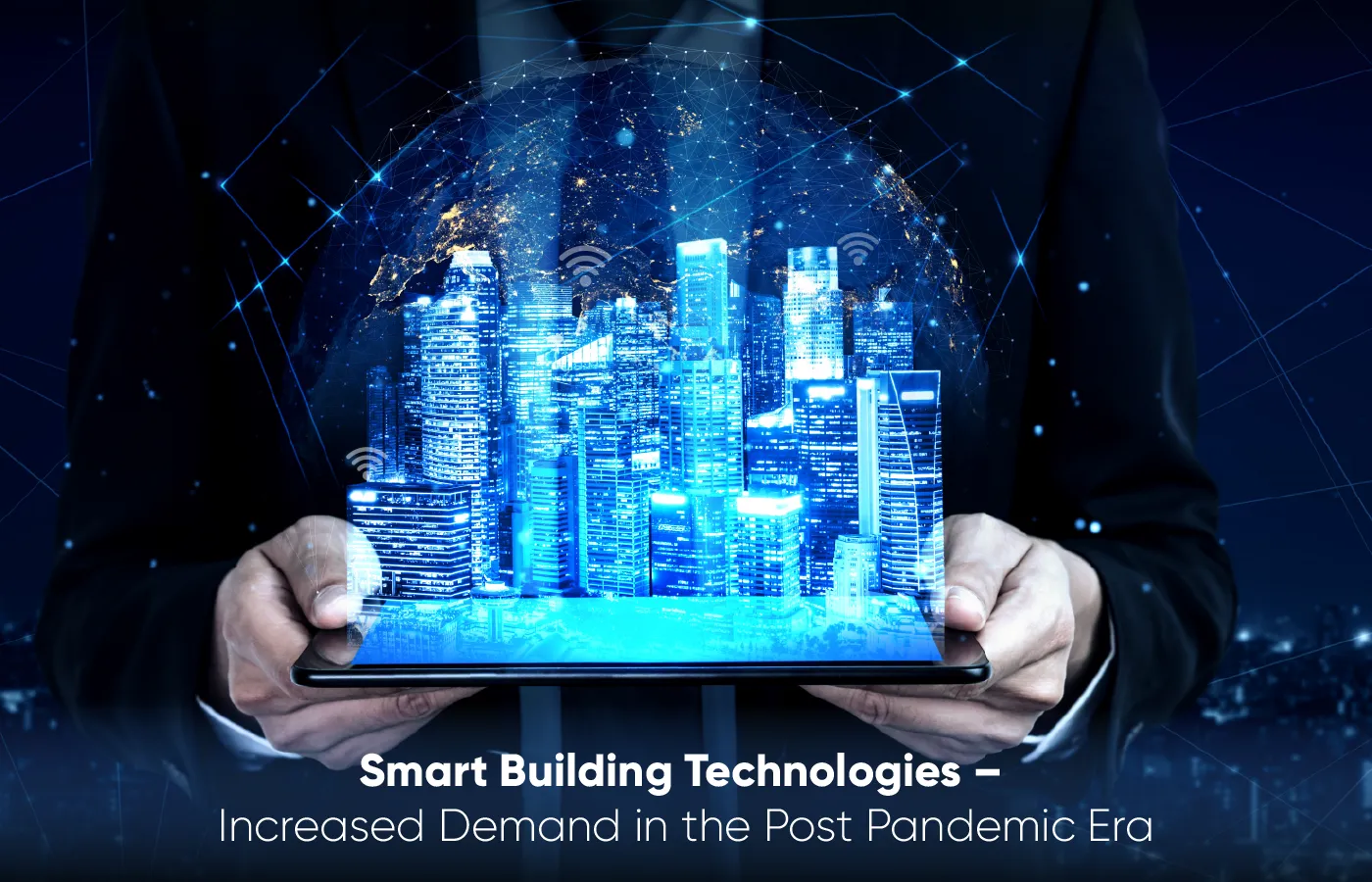The pandemic changed how the world looks at work and workplaces. Organizations had to consider many new infrastructure and workplace facilities, especially sanitization and hybrid working capabilities.
This paved the way for intelligent building systems and strategies
Smart Building Solutions – Increased Demand in the Post Pandemic Era

Introduction:
The pandemic changed how the world looks at work and workplaces. Organizations had to consider many new infrastructure and workplace facilities, especially sanitization and hybrid working capabilities.
This paved the way for intelligent building systems and strategies integrating community, building systems and infrastructure, information and technologies, smart sensors, data & advanced analytics, connectivity, and Smart HVAC,within workspaces.
The positive influences of smart buildings have had a profound impact on hotel and leisure facilities, deploying smart building solutions has not only improved hygiene standards and saved on running costs, but has also led to huge advancements in the whole living experience.
Furnished below are the top strategies an organization can consider to convert the facility to a smart building, incorporating smart building solutions with advanced features technologies:
1. Intelligent Workspace Management for healthy living
Companies are investing in workspace management solutions to ensure their employees’ optimal health and safety by deploying smart sensors and modern automation gadgets.
The companies introduce advanced stress buster programmes and facilities management solutions like workplace gyms, healthy cafeterias, in-house medical care and counselling sessions for their employees.
Secondly, the building data from smart sensors helps to drive analytics and system settings to provide a more granular view of the building’s performance over a period of time.
2. Environment control and the importance of smart HVAC
The IoT driven HVAC system segments the workspace to deliver more efficient air conditioning with consistent, soothing temperatures. The system maintains indoor air quality by actively analyzing the amount of Co2 emitted and circulating o2 as and when required, depending on the occupancy.
The main function of intelligent HVAC controls is to effectively manage airflow, temperature control, to improve indoor air quality using smart building solutions.
The nine parts of the HVAC system consist of an air return, filter, exhaust outlets, ducts, outdoor electrical unit, compressor coils and blower that are activated for long hours, allowing to leverage the existing IT infrastructure and creating a data-driven building.
3. Lighting Management System
Lighting Management Systems are critical in team member experience and Energy optimization.
From a team member’s perspective, poor lighting at work can lead to eye strain, fatigue, headaches, stress and accidents. On the other hand, too much light can cause safety and health problems such as screen glare, headaches and anxiety. Both can lead to mistakes at work, poor team member experience and resut in low productivity.
Good lighting at the workplace pays rich dividends in terms of improved productivity and reduced errors. A sound lighting management system should optimize the lighting as per the environment, daylight and comfort levels of the employees.
A lighting management system also offers massive energy savings, in some cases up to 60%, which will have huge implications on cost savings.

4. Providing a hygienic work environment
This intelligent infrastructure management solution is accessible to washroom management. The cleanliness monitoring system provides a unique approach to toilet cleaning through the array of smart sensors in real-time action by alarms and indicators for timely cleanliness to improve hygiene in smart buildings.
Another enhanced facility is touchless restroom fittings and fixtures. Restrooms are now replaced with sensor-based technologies, including voice command and IoT-based products for elevators, digital lockers, parking management and automatic doors to support entry and exit users without surface contact.

- How can smart building solutionsimprove efficiency and productivity in teams?
Improved Employee Engagement
If Employees are satisfied with their workplace they tend to be engaged. They are energized and can generate ideas to make work both enjoyable and productive.
The role of IOT solutions in smart building solutions – an intelligent ecosystem that manages working conditions with the help of connected devices.
Below are a few Smart Office Options that makes the quality of work life better:
Conclusion
In recent years the earlier infrastructure buildings slowly fade with the implementation and demand for intelligent building systems or smart building solutions. The emphasis for Smart offices has increased due to the awareness among companies and business owners. With the will to adapt to technological trends that are beneficial to end users.
